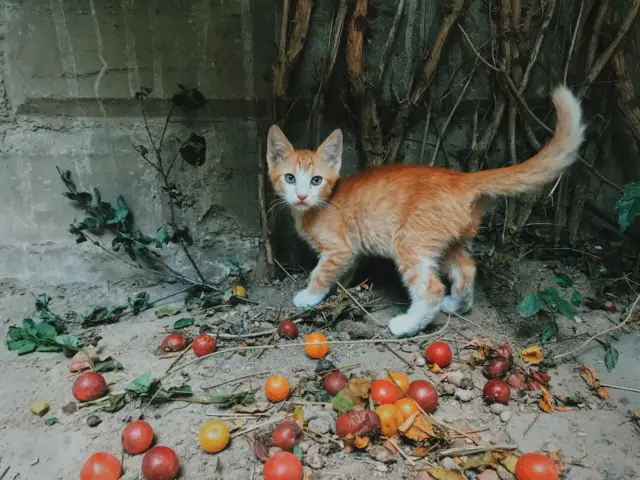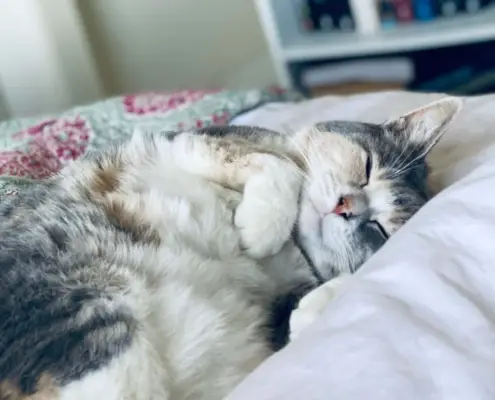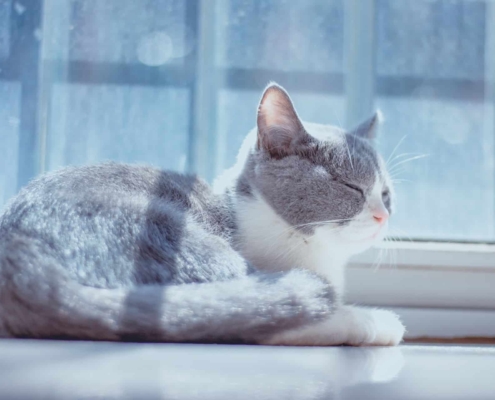
Cats are fascinating creatures, and as a pet owner, it’s important to understand the intricacies of their digestive system. From the moment they take their first bite of food, their digestive system goes into action, breaking down the food and extracting the necessary nutrients. In this comprehensive guide, we will explore the anatomy of a cat’s digestive system, the process of digestion, common digestive issues, feeding guidelines for a healthy digestive system, signs of a digestive problem, home remedies, when to seek veterinary care, and preventive measures for maintaining a healthy digestive system in cats.
The Digestive System of a Cat
The digestive system of a cat is a complex system that involves several organs working together to break down food and absorb nutrients. The process begins in the mouth, where the teeth and tongue work together to chew and mix the food with saliva. The food then moves into the esophagus and into the stomach, where it is mixed with gastric juices and broken down into smaller pieces. From there, the food travels into the small intestine, where most of the nutrients are absorbed. The remaining waste products then move into the large intestine and out of the body.
The Anatomy of a Cat’s Digestive System
The digestive system of a cat consists of several organs, including the mouth, esophagus, stomach, small intestine, large intestine, pancreas, liver, and gallbladder. The mouth contains teeth and a tongue, which are used to chew and mix the food with saliva. The esophagus is a muscular tube that connects the mouth to the stomach. The stomach is a muscular sac that mixes the food with gastric juices, breaking it down into smaller pieces. The small intestine is a long tube where most of the nutrients are absorbed. The large intestine is a wider tube that absorbs water and electrolytes from the remaining waste products. The pancreas produces enzymes that help break down proteins, fats, and carbohydrates, and the liver produces bile, which helps with the digestion of fats.
The Process of Digestion in a Cat
The process of digestion in a cat begins in the mouth, where the teeth and tongue work together to chew and mix the food with saliva. The food then moves into the esophagus and into the stomach, where it is mixed with gastric juices and broken down into smaller pieces. From there, the food travels into the small intestine, where most of the nutrients are absorbed. The remaining waste products then move into the large intestine and out of the body.
Common Digestive Issues in Cats
Cats can experience a variety of digestive issues, including vomiting, diarrhea, constipation, and hairballs. Vomiting can be caused by a variety of factors, including hairballs, foreign objects, and gastrointestinal issues. Diarrhea can be caused by a sudden change in diet, an infection, or a gastrointestinal issue. Constipation can be caused by a lack of fiber in the diet, dehydration, or a gastrointestinal issue. Hairballs are a common issue in cats and can be caused by excessive grooming or a lack of fiber in the diet.
Feeding Guidelines for a Healthy Digestive System
Feeding your cat a healthy diet is essential for maintaining a healthy digestive system. Cats are obligate carnivores, which means they require a diet that is high in protein and low in carbohydrates. Feeding your cat a high-quality, protein-rich diet can help prevent digestive issues and promote overall health. It’s also important to provide your cat with plenty of fresh water and to avoid feeding them table scraps or human food.
Signs of a Digestive Problem in Cats
There are several signs of a digestive problem in cats, including vomiting, diarrhea, constipation, loss of appetite, and lethargy. If your cat is experiencing any of these symptoms, it’s important to seek veterinary care as soon as possible. Digestive issues can be a sign of a more serious underlying health problem.
Home Remedies for Digestive Issues in Cats
There are several home remedies that can help alleviate digestive issues in cats, including feeding them a bland diet, providing them with plenty of fresh water, and giving them probiotics. Bland diets can help soothe the digestive tract and provide the necessary nutrients without causing further irritation. Probiotics can help restore the balance of healthy bacteria in the gut, improving digestion and reducing the risk of gastrointestinal issues.
When to Seek Veterinary Care for Digestive Problems
If your cat is experiencing digestive issues, it’s important to seek veterinary care as soon as possible. Digestive issues can be a sign of a more serious underlying health problem, and early intervention can improve the chances of a successful outcome. Your veterinarian can perform a physical exam, run tests, and provide treatment options to help alleviate your cat’s symptoms.
Preventive Measures for Maintaining a Healthy Digestive System in Cats
Preventive measures can help maintain a healthy digestive system in cats. Feeding your cat a healthy diet, providing them with plenty of fresh water, and avoiding table scraps or human food can all help prevent digestive issues. Regular veterinary checkups can also help identify potential health problems before they become more serious.
Caring for Your Cat’s Digestive Health
Caring for your cat’s digestive health is essential for their overall health and well-being. Understanding the anatomy of their digestive system, the process of digestion, and common digestive issues can help you provide the best possible care for your furry friend. Feeding them a healthy diet, providing them with plenty of fresh water, and seeking veterinary care when needed can help maintain a healthy digestive system and improve their quality of life.
Talk to your veterinarian about your cat’s digestive health and ask for recommendations on how to improve their diet and prevent digestive issues.
If you enjoyed my article, I would appreciate you sharing it with your network.

Sima Ndlebe
Sima writes for CatBuzz. He is interested in Cats, Health and Fitness, and Entrepreneurship.
Published: 17 November 2023
Related Articles
Disclaimer
The content found on CatBuzz.org is presented on an "as is" basis and is intended for general consumer information and education purposes only. Any utilization of this information is voluntary and solely at the user's own risk.
None of the articles or content should be regarded as, or used in place of, veterinary medical advice, diagnosis, or treatment. The information provided on the website is purely for educational and informational intentions and should not be considered a substitute for professional guidance from a veterinarian or other qualified expert. The articles are designed to inform consumers about veterinary healthcare and medical matters that may impact their cat's daily life. It should be noted that this website and its services do not constitute the practice of any form of veterinary medical advice, diagnosis, or treatment. CatBuzz.org explicitly disclaims any liability for any direct or indirect damages or losses that may arise from the use of or reliance on the information contained within the content.
Consumers must consult a veterinarian, veterinary specialist, or another qualified veterinary healthcare provider when seeking advice regarding their cat's health or medical conditions. It is important not to ignore, avoid, or postpone seeking medical advice from a veterinarian or other qualified veterinary healthcare provider solely based on information obtained from this website. If you believe that your cat may be experiencing a medical issue or condition, it is imperative to promptly contact a qualified veterinary healthcare professional.



